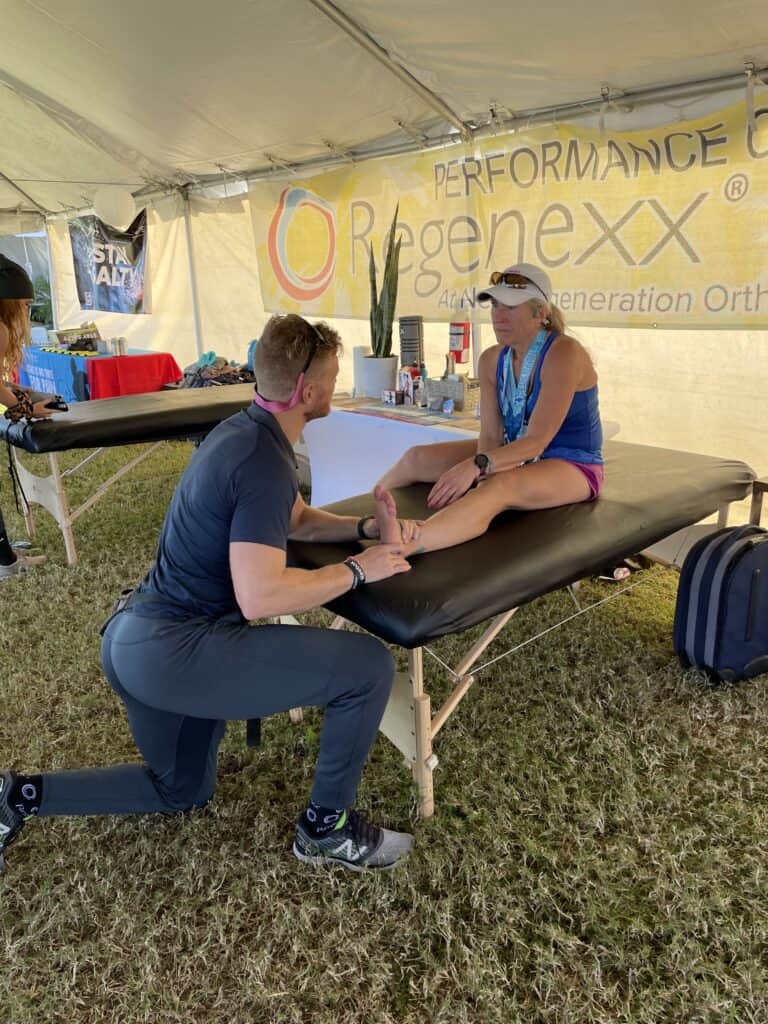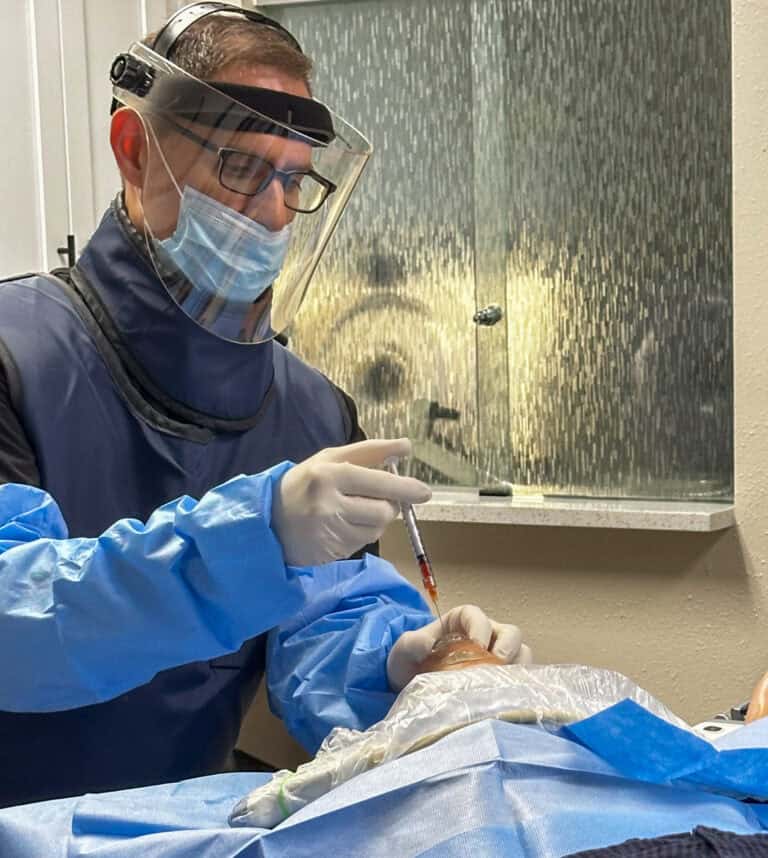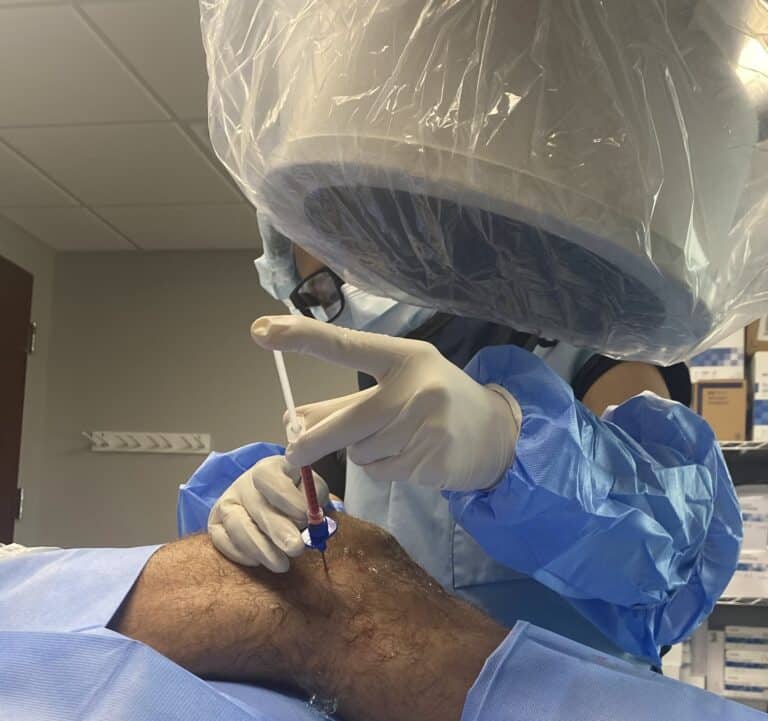Wow! The St. Pete Run Fest was such an amazing event, and we had so much fun supporting the athletes there! Runners took on a 5k, 10k, or half marathon, and even some took on “challenges” consisting of all three races or some other combination of two races in two days. It was impressive to watch the 5000+ participants take on up to 22 miles in two days. To support, the Regenexx team provided Rocktape to help keep the athletes comfortable during the races and offered ultrasound examinations for the runners who had questions about nagging injuries.
A common phrase I say to my patients is “Tell me the sport, and I’ll tell you the injury.” This is because each sport has repetitive movement patterns that lead to common injuries. For example, volleyball players generally have shoulder issues due to repetitive arm swing movements in the sport. In the case of running, there are generally common areas of pain and injury. Those are the knees, lower legs, ankles, and feet. Over 90% of the injuries that were Rocktaped and/or evaluated by Dr. Torrance on-site at the St. Pete Run Fest were in the knees, lower leg, ankles, and feet.
Why are knees, lower legs, ankles, and feet the problem area for runners? Well, there is actually a great explanation for this — running is one of the most repetitive sports there is. Running is initially a repetitive single-leg stance for miles on end.
The image below of Olympic-medalist and celebrity marathoner, Shalane Flannagan, shows the single-leg stance inherent to the running gait or the cycle a leg travels through during one step when running. Considering she is one of the best runners in the world, her single-leg stance looks pretty, but even Shalane has recently had career-ending knee reconstructive surgery from the repetitive microtrauma running can have on the body.
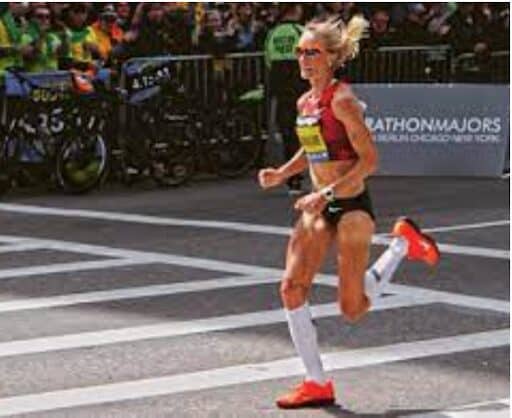
In the case of a half marathon, runners are performing repetitive single-leg stances for over an hour and a half! So, if there are deviations in a runner’s gait, it can cause injuries due to the volume of steps. The St. Pete Run Fest had events totaling up to 22 miles and that’s 22 miles of the repetitive single-leg stances in two days. That being said, some of these athletes had aches and pains by the end of the weekend.
Here are some of the common injuries we saw when speaking to athletes at the St. Pete Run Fest:
- Plantar fasciitis
- Shin splints
- Great Toe Tendonitis
- IT Band Tendonitis
- Patellofemoral Syndrome
- Knee MCL Sprain
- Chronic Knee Arthritis
- Hamstring Tendinitis
- Calf Strain
- Posterior Tibial Tendonitis
- Soleus Strain
- Achilles Tendonitis
Initially, runners tend to have these common injuries for three core reasons:
- Running mechanics
- Improper footwear
- Running Volume
Let’s dive into each of these reasons to help identify which might resonate with your situation if currently nursing a running injury. After all, Ben Franklin says it best “an ounce of prevention is worth a pound of cure.”
The first reason runners might experience injury, is because of running mechanics. This is one of the most prominent causes of pain and injury when running because, like mentioned before, of the sheer repetition of the sport. So, if your gait has a hitch in it, that can lead to specific injuries. It’s very important for us to look at a runner’s walking and running gait to assist in finding the root cause of the issue.
Sometimes we can examine a runner and tell right away that their gait looks “painful,” laborious or wild, or simply “not right.” But, there are actually some more subtle aberrations to a runner’s gait that can cause some of the gnarliest injuries we see.
What happens in a foot strike determines what happens in every joint north of there. An initial foot strike can affect the big toe, ankle, shin, calf, knee, and so on. So, if you have flat feet or high arches that could affect how your foot strikes and in turn affect where you take most of the impact as shown in the image below:
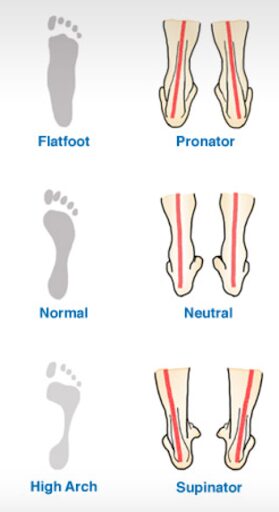
Addtionally, where your foot lands on the ground relative to your body matters. For example, some runners overstride, or heel strike.

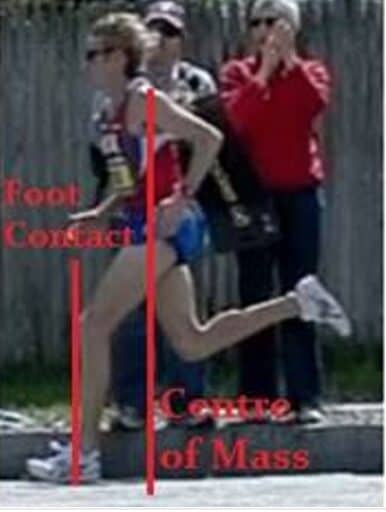
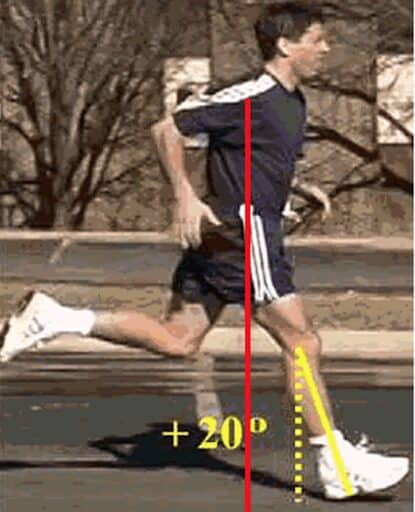
Some runners have a cross-over gait, meaning that their legs come closer to midline with each step rather than staying stacked under their hips.
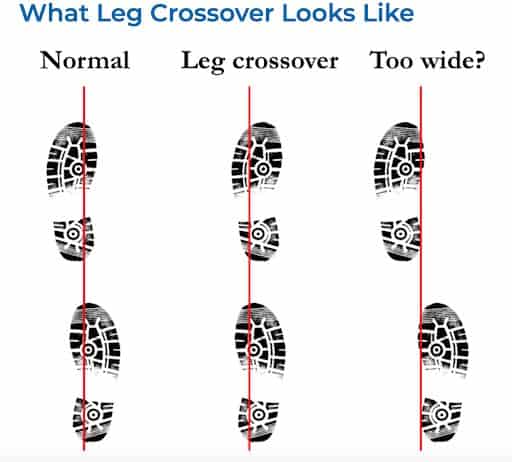
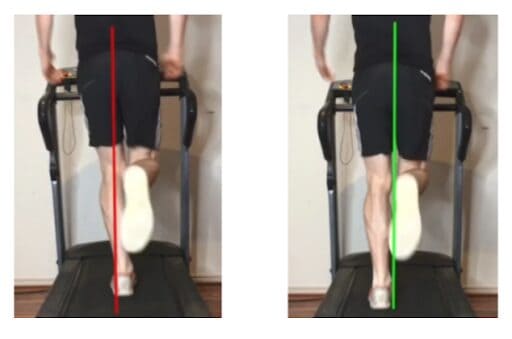
All of these gait variations can cause overload in certain tissues or joints leading to injury, and can specifically help guide to the root cause of your pain. A skilled clinician can help you know which one of these might be you, so you can work to correct the problem.
Second on our list of causes of running injuries: footwear. Footwear is an important part of having a healthy running career that isn’t riddled with starting and stopping your training due to injury.
However, people always ask me “what’s the best running shoe,” and there isn’t just one straight answer that applies to everyone. I respond with “the best shoe for you is the last known shoe you’ve had no injuries in.” There are shoes that are en vogue that might not be the best shoe for you.
Going to a running specialty store like Fleet Feet, Fit To Run or St. Pete Running Company can be a great help. Speaking to an expert can help get you fit for a shoe that would prevent injuries based on your foot’s structure and your gait pattern.
Now, there are some shoe designs that go against what we know about mechanics and can contribute to injuries. For example, the new carbon-fiber plate technology in the forefoot of a shoe makes a shoe rigid where we need flexibility, mechanically speaking. When I see runners in this shoe during races and I can literally see the injury happening to their posterior tibial tendons, Achilles tendons, and knees right in front of my eyes.
Also, I feel that the focus on “zero drop” shoes is too prominent when most people need to work up to be able to wear this type of shoe. A zero drop shoe, or when a shoe with an elevation change from toe to heel equals 0mm, requires a great amount of ankle flexibility and foot strength to manage. So, it takes time, stretching, and strengthening to be able to run miles in this type of shoe.
That leads us to our third common cause of running injuries— inappropriate ramp-up to a large running volume. It’s very important that you gradually increase mileage as you shoot for a race goal. There is a reason most race training plans span 12 or more weeks— because it takes that amount of time to safely build a running base.
Generally, training plans increase the mileage by about 10% each week and provide a “peak” in training that is a few miles more than the goal race. An example of a peak in training is running 7 or 8 miles as a long run two weeks before a 10k, or 6.2 mile, race.
Sometimes people sign up for races, time gets away and the runners aren’t able to follow a training program. As a consequence, they run say a maximum of 3 miles for a 6-mile race. This person is more prone to get injured because their body hasn’t seen that volume before. It’s important to get miles under your feet to prepare for your target race and there is simply no way around it.
If you’re experiencing a sore foot, shin pain, or knee pain post-marathon, physicians Regenexx at New Regeneration Orthopedics can help get you back out there doing what you love most! Our Regenexx Procedure Candidate Form is a great place to start understanding if regenerative orthopedic medicine is right for you.
References:
- http://www.teamchiroames.com/blog/the-ideal-running-gait-focus-on-foot-strike
- https://www.runandbecome.com/running-product-advice/know-foot-strike
- https://runnersconnect.net/diagnose-running-knee-injuries/
- https://runsmarter.online/running-technique-step-width/
